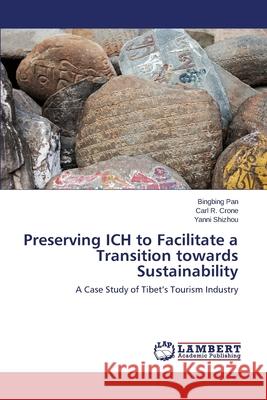Preserving ICH to Facilitate a Transition towards Sustainability » książka
Preserving ICH to Facilitate a Transition towards Sustainability
ISBN-13: 9783659487934 / Angielski / Miękka / 2015 / 108 str.
Intangible cultural heritage ICH is the root of all cultural expression. Although ICH has always existed, it has only been defined by UNESCO, since 2003 (UNESCO, 2001). There has been little research into ICH and, therefore, little accomplished with regards to how to guide its preservation especially via science-based strategic sustainable development (SSD) methodologies. It is generally acknowledged that culture is one of the main reasons most people travel to developing regions, such as Tibet, and therefore it could be a key player in moving ICH preservation towards sustainability. The book focuses on and examines ICH through the lens of SSD and uses one of the key players in the collapse of modern-day culture-tourism-as the vehicle to enter into a relevant case study-Tibet. The goal is to find ways to preserve ICH and help both the indigenous people, who are losing their culture, as well as the tourism industry, which depends heavily upon culture to feed its business. As a case study, Tibet, possessing an incredible array of culture, is both unique and typical. UNESCO lists five categories of ICH in the world, and Tibet demonstrates ICH in all five of these categories."
Intangible cultural heritage(ICH) is the root of all cultural expression. Although ICH has always existed, it has only been defined by UNESCO, since 2003 (UNESCO, 2001). There has been little research into ICH and, therefore, little accomplished with regards to how to guide its preservation especially via science-based strategic sustainable development (SSD) methodologies. It is generally acknowledged that culture is one of the main reasons most people travel to developing regions, such as Tibet, and therefore it could be a key player in moving ICH preservation towards sustainability. The book focuses on and examines ICH through the lens of SSD and uses one of the key players in the collapse of modern-day culture-tourism-as the vehicle to enter into a relevant case study-Tibet. The goal is to find ways to preserve ICH and help both the indigenous people, who are losing their culture, as well as the tourism industry, which depends heavily upon culture to feed its business. As a case study, Tibet, possessing an incredible array of culture, is both unique and typical. UNESCO lists five categories of ICH in the world, and Tibet demonstrates ICH in all five of these categories.











